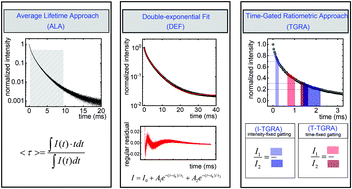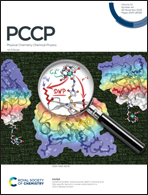Cr3+ based nanocrystalline luminescent thermometers operating in a temporal domain†
Abstract
Cr3+ doped nanocrystals were examined as a noncontact temperature sensor in a lifetime-based approach. The impact of both the analysis protocols and host materials on the lifetime-based approach was systematically investigated. Temperature-dependent luminescence decay curves were analyzed according to three different procedures (average lifetime approach, double exponential fit and time-gated ratiometric approach). The advantages and drawbacks of each method are discussed. Additionally, the thermal sensitivities derived from the average lifetime approach and the double exponential fit revealed a strong dependence of the thermal sensitivity of the Cr3+ doped nanocrystals on the crystal field strength. In these cases, it was found that the long metal–oxygen distances in the host materials improve the thermal sensitivity of the system. This work reveals the importance of both host materials and analysis procedures in the lifetime thermal sensitivity of Cr3+ doped nanocrystals and opens up an avenue towards their future optimization.



 Please wait while we load your content...
Please wait while we load your content...